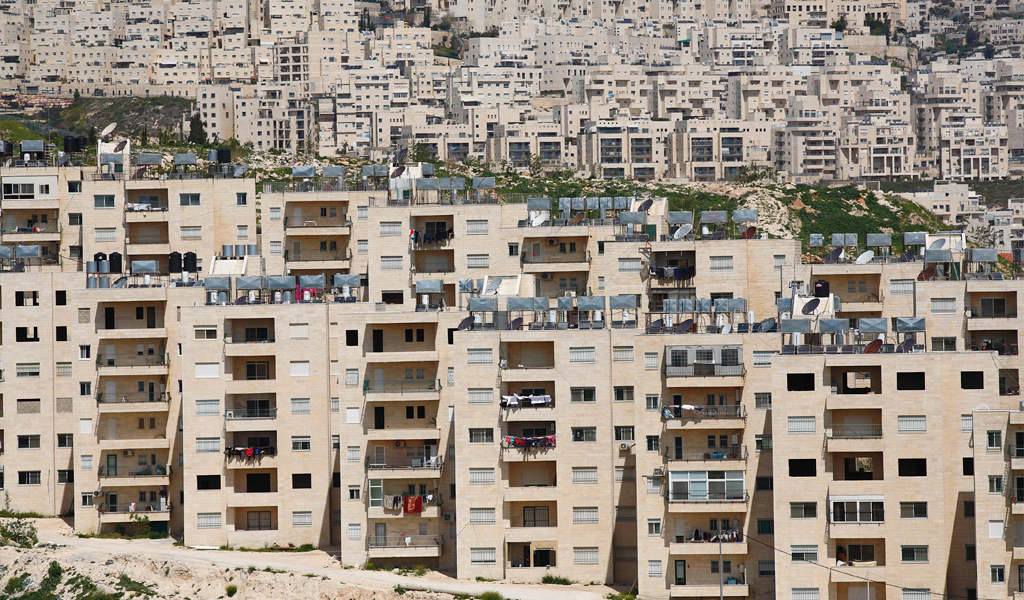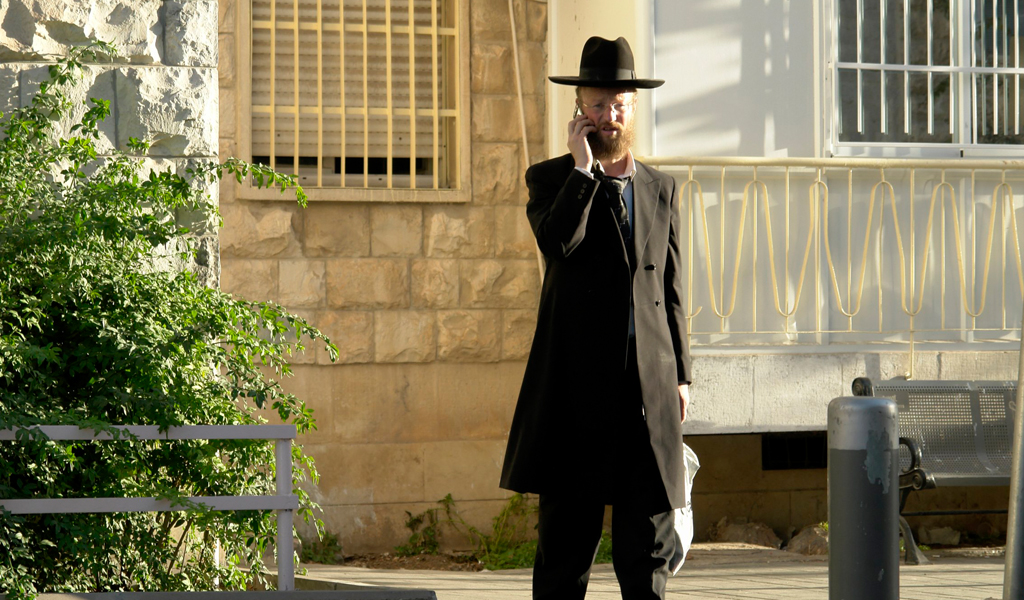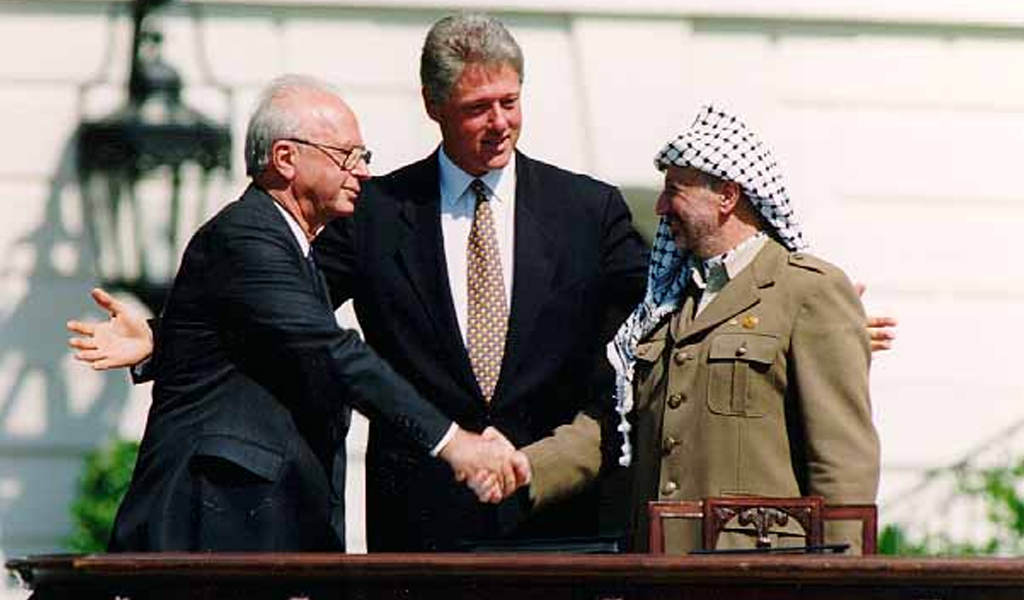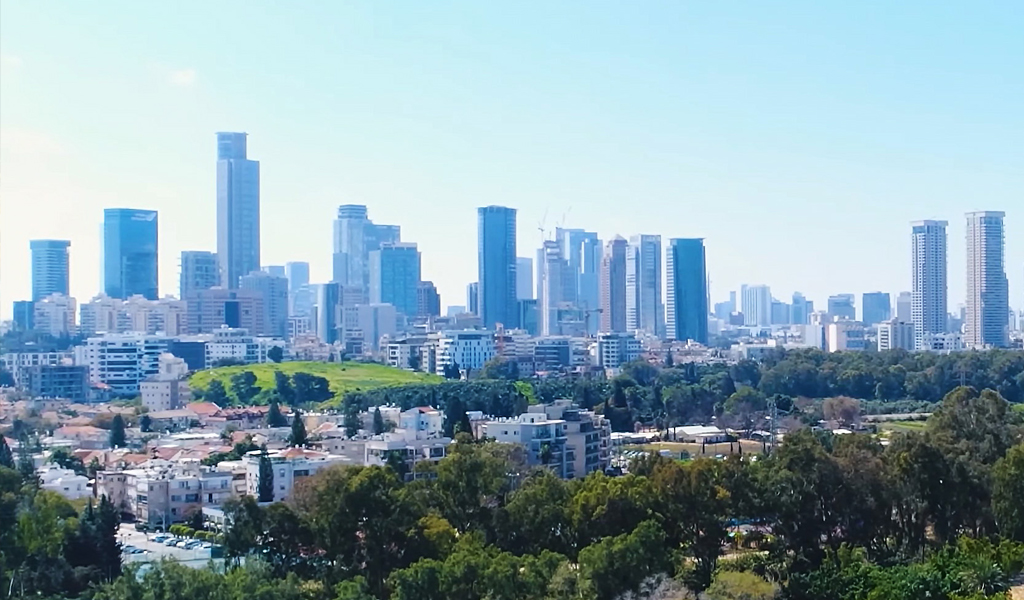The settlement issue and the two-state solution
Assertion
The construction of Jewish settlements in the West Bank is to blame for the fact that there is no peace between Palestinians and Israel.

The facts
The Jewish settlements that have been built in the West Bank and East Jerusalem over the past fifty years are illegal under international law and an obstacle to a peaceful solution to the conflict between Palestinians and Israelis. But they are not the cause of the conflict. The origin of the conflict lies in the refusal of the Arab states to recognize the model of a two-state solution (with a Jewish and a Palestinian state) proposed by the UN.
This refusal dates back to 1947 – the year in which the UN adopted the Partition Plan. However, the first Jewish settlements in the West Bank were only established more than twenty years later, after Israel had conquered this territory from Jordan in the 1967 Six-Day War, together with the Gaza Strip from Egypt.
Gaza shows that renouncing settlements does not necessarily bring peace: Israel evacuated its own settlements there back in 2005 and withdrew from the Gaza Strip completely. Since then, however, the Jewish state has been confronted with constant attacks by the terrorist organizations Hamas and Islamic Jihad, which rule Gaza, culminating in the massacre on 7 October 2023.
Immediately after the victory in the Six-Day War in June 1967, Israel began building settlements in the West Bank, which had previously been occupied by Jordan (and also on the Golan Heights conquered from Syria). These were located beyond the so-called “Green Line”, which had been agreed as the border in the ceasefire with Jordan.
Military, political and economic reasons
These first settlements were primarily for strategic security reasons for Israel: They were intended to secure its own territory in the event of another war. Accordingly, they were located close to the border.
In the years and decades that followed, settlement construction was extended to ever larger parts of the West Bank, and Jewish settlers also settled in the eastern part of Jerusalem conquered by the Jordanians. As a result, according to the latest surveys, a total of 450,000 settlers now live in the West Bank alongside the 2.5 million Palestinians. East Jerusalem is home to 435,000 Palestinians and 220,000 Jews.
Military and security reasons played a primary role in the early construction of settlements. In the settlements that were built later and are still being built today, religious, economic and political aspects were and are the main focus. Over the years, more and more orthodox settlers moved to the West Bank, as this is the biblical Judea and Samaria, two traditional homes of the Jews.
Religious aspects also played the primary role in the (re)settlement of Hebron in 1968. This is because the tomb of Abraham is located in Hebron. Until a pogrom was carried out by the Arabs living there in 1929, in which over 100 Jews were murdered and the others had to flee, Jews always lived in the city, which according to current research was built in 300 BC and has been inhabited ever since.
In addition to religious reasons, economic considerations also often play a role in Israelis deciding to move to the West Bank. This is because housing there is subsidized and is therefore significantly cheaper than in Israel itself.
However, it was primarily political considerations that have prompted Israeli governments, particularly those on the political right, to approve many settlement projects in recent decades.
The large number of new settlements and pending settlement construction projects are intended to create a fait accompli in order to make the two-state solution agreed by the UN in 1947 impossible. This is despite the fact that the two-state solution was approved by Israel at the time and also later – particularly in the Oslo peace process with the PLO that began in 1993.
As a result, violent, often deadly clashes between Palestinians living in the West Bank and Jewish settlers occur time and again. While these attacks used to mostly come from the Palestinian side, there has recently been an increase in attacks by ultra-nationalist and religious settlers on the Palestinian population in the West Bank.
Legal situation is controversial
The legal situation of the Jewish settlements in the West Bank is controversial. The UN, the European Union and the International Court of Justice consider the construction of settlements in the West Bank and East Jerusalem to be illegal and have condemned this in various resolutions and decisions in the past.
This is justified by the Geneva Convention Relative to the Protection of Civilian Persons in Time of War of 1949, which states in Article 49, paragraph 6: “The Occupying Power shall not deport or transfer parts of its own civilian population into the territory it occupies.”
The Israeli government views the situation differently and argues on the basis of a report it commissioned (“Levy Report” of 2012) that this article of the Geneva Convention does not apply in this case because the West Bank and East Jerusalem are not “occupied territory”. However, this view is not shared internationally.
Even the Israeli Supreme Court does not unconditionally support the position of the Israeli government. In the past, the Supreme Court has not fundamentally opposed settlement construction in the West Bank. However, it has repeatedly declared settlement projects and expropriations of Palestinian landowners approved by the government to be illegal.
Dr. Einat Wilf, former member of the Knesset, on the ILTV program “Israel Weekly” on the question of whether the Israeli settlements are preventing a two-state solution.
Obstacle on the way to a two-state solution
As intended above all by ultra-nationalist and religious Israeli politicians, the large number of settlements that now exist, with almost half a million Jewish inhabitants, represents a serious obstacle to the creation of a Palestinian state encompassing the West Bank and Gaza – as envisaged in the two-state solution of 1947.
However, there have been several attempts to realize this solution in the past. In 2000/2001, peace negotiations between the PLO and Israel took place under the patronage of US President Bill Clinton. The Israeli government agreed to a proposal for an independent Palestinian state that would have encompassed the whole of Gaza and 94-96% of the territory of the West Bank.
According to the peace plan, Israel would have compensated for up to three percent of the missing territory by ceding its own territory. This would have created a land bridge between Gaza, located on the Mediterranean, and the West Bank, located inland. As a result, the Palestinian state would also have formed a territorial unit. However, the then Palestinian President Yasser Arafat rejected the proposal.
In 2008, another attempt to realize the two-state solution despite the settler problem failed. The then Israeli Prime Minister Ehud Olmert presented a plan that envisaged the Palestinians ceding 6.3% of their territory to Israel. This would have allowed 80% of the Jewish settlers to be integrated into the Israeli heartland. The Israelis had already withdrawn from Gaza in 2005 and evacuated all their settlements there.
In return, the Palestinians were to receive 5.8% of Israeli territory. And as proposed by US President Clinton and the then Israeli Prime Minister Ehud Barak in 2001, a land bridge was to ensure that Gaza and the West Bank could become a contiguous state. However, Arafat’s successor as Palestinian President, Mahmoud Abbas, also rejected the Israeli peace plan.
As around 80% of the Israeli settlers living in the West Bank today are concentrated in five large blocs, experts believe that a two-state solution is still possible. The current war in Gaza has led to both the USA and the European Union once again pushing resolutely for such a solution.
Wishful thinking and reality
In the Neue Zürcher Zeitung (NZZ) of January 27, 2024, Peter Rasonyi, head of the foreign affairs department, writes: “The US and the EU are calling for a Palestinian state. They are on the right side of morality and the wrong side of reality.”
Europe and the USA are ignoring the real political situation in the Middle East with their demands for the immediate implementation of a two-state solution, criticizes Rasonyi. If the USA and EU are serious about their demand for an independent Palestinian state, they must first create the necessary conditions for this.
First and foremost, this means that they must ensure Israel’s security, writes the NZZ’s head of foreign affairs. Because only if this is guaranteed can Israel be convinced to relinquish control over the Palestinian territories. “A forced establishment of a Palestinian state against Israel’s will, as suggested by Borrell (the Vice-President of the EU Commission responsible for foreign and security policy, ed.), is completely absurd.”






